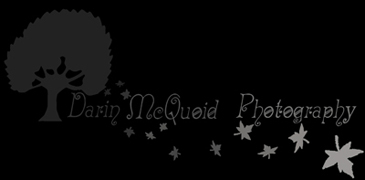
| Darin McQuoid | Blog | Reviews | Tutorials | River Directory |
Whitewater
Photography Tutorial #11: Sequences
Rafa Ortiz, Indus River, Pakistan. Nikon D200, Nikkor 50mm 1.8 @ 1/1250 F7.1 ISO 100.

In my opinion it's rare that a kayaking shot is worth sequencing. Most of the time one image tells the story, but not on all occasions. The process of putting together a sequence is one of the less understood so I feel it deserves some attention. I've never taken Photoshop classes and am sure there are people better at this than I, so please remember that I'm illustrating how I put sequences together, there are other and possibly better ways, but this works for me. This process takes a lot of computer processing power, especially if you shoot raw.
While high speed sports need a 10fps camera to do sequences, boaters tend to be moving at a slower pace. 2.5 fps (frames per second) is often adequate, and I generally have to skip frames from 5fps sequences, because the paddler tends to overlap. It would be easiest to do a sequence using a tripod, but the bulk of one keeps it out of my boat. Shots eligible for sequencing have the paddler moving across the frame while the camera is held in one position. Shooting waterfalls from downstream is an obvious situation that fits the bill. In this case I'll start with ten shots of Ryan Knight on the South Branch Feather, but I'll probably only use 4-6 images combined for the sequence.
Anything in italics referrers to the menu system in Photoshop.
Step 1: Open and edit all the images at the same time in photoshop. Use shift-click or ctrl-click to select all the images to be opened. Once open in the raw editor be sure to click "Select All" in the top left so we are editing all the files in the same exact way. I then apply standard editing touches as necessary, in this case +25 Fill Light, +50 Vibrance, +10 Saturation. Alt-Click to open all and wait while they load, depending on your computer this might take a while.

Step 2: Adjust the Canvas Size for the first image in the sequence. Use Alt-Ctrl-C or Image > Canvas Size to open the Canvas Size dialogue box. We're going to make the canvas a little larger here because the photographs won't line up perfectly, and this will give us some breathing room to end up with a larger final image. Switching from pixels to percent in the drop down menu, I increase my canvas size by 120% width and height.

Step 3: Copy, past and align. I find the next photo that I want in the sequence, ideally one soon after the first image, but with the paddler not overlapping. In this case I skip a shot and go to the third image of the sequence, looks like it wont overlap and I like that I can see Ryan's face. Ctrl-A or Select > All to select the whole image. Ctrl-C or Edit > Copy to copy the image to the clipboard. Switch back to the original image tab and Ctrl-V or Edit > Paste to past the image over the original. Make sure your Layers window is open via F7 or Window > Layers. Now that the layers window is open, adjust the opacity slider to around 50%.

Now find a well defined point in the photo, in this case I used a crack in the rock. Zoom to 200% and align the image using the Move Tool, when things look perfect you can't tell it's at 50% opacity because it looks like the same image, excepting water which is always changing, ignore the misaligned splashes. At 200% zoom and 50% opacity it looks like a good line up.

I then zoom back out with Ctrl-0 (zero) and make sure that Ryan isn't overlapping. If he was I'd choose the next image in the sequence and start over. He isn't so now I'll adjust opacity back to 100% and flatten the image via Layers > Flatten Image. Checking to make sure Ryan isn't overlapping.

Step 4: History Brush. The history brush is a tool that works like the Brush tool, but instead of applying a color, it "brushes in" the image from a previous state in the image processing history. Select the History Brush from the tools menu on the left. Make sure your History Window is open; Window > History. In the history window set the source for the history brush back to where we adjusted the canvas size by clicking the box next to Canvas Size.

I like to keep my History Brush hardness set at 0%. This helps things blend in a natural way. This is adjusted under the brush settings in the top left corner.

Now I bring Ryan back from the original image into the new one, using the history brush. The larger the diameter of the brush, the larger radius of softness. If I am working on two objects close together, I'll make the diameter of the brush smaller by using the "[" shortcut. Pressing ] increases brush size respectively. After brushing Ryan in with the history brush, I increase my brush size and check to make sure that the edge of the images makes a smooth transition. If things are not perfectly aligned, using the history brush on sharp edges will clean them up. Once this is done I save the image and start the process again with the next appropriate frame, increasing my canvas size as necessary. In this sequence I ended up using seven of ten images.
Ryan Knight, "99 Problems" on the South Branch of the Middle Fork Feather River. Nikon D200, Nikon 75-150 "E" @ 150mm 1/1000 F5.6 ISO 100.
